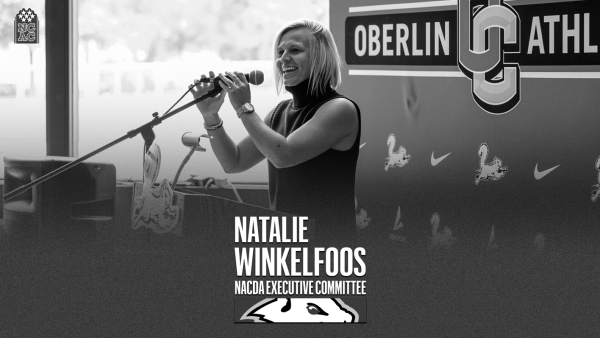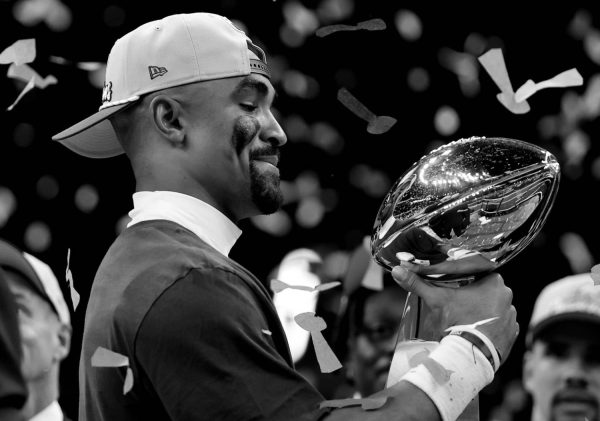Why Transphobia in Sports is About Sexism
When I first sat down to talk with a friend about the Lia Thomas controversy, I approached it with an excited apprehension. Earlier that day, I had compiled a document filled with prodding questions, credible news articles, and helpful information about hormones. Over the next hour, we wove our way through ideas about fairness, genetic advantages, and my personal experience as a trans athlete. He was kind and understanding and I was grateful that he reached out. I left feeling hopeful, even enthusiastic about continuing our conversation.
But, I was also stumped. Stumped because biology felt omnipresent. I realized that Lia Thomas and the trans women who came before her are simply a microscope fixed on a bigger issue: how we interpret gendered bodies. Because ultimately, transphobia in sports is about sexism. It’s about the regulation of female bodies and the celebration of male bodies. As a female athlete who is now male-passing, this was a lesson I learned the second I started playing sports as a child.
In college, the sexism I had grown up with transformed into something more dangerous. When I was a student on the Oberlin women’s basketball team, I saw a number of people in the female athlete community struggle with eating disorders, exercise addiction, and body image issues. These athletes were stuck in the crosshairs of male desirability and athletic success. They had to craft a body that would be competitive and conventionally desirable — with these two things often at odds with each other.
But it wasn’t just social influences that regulated female bodies; it was the arbiters of the sport themselves. During the women’s basketball games, referees enacted their own ideas of fairness, mainly through fouls. Teammates who were deemed too tall or too strong or too fast were penalized disproportionately. What should’ve been seen as a competitive advantage was read as inherently unfair.
But the thing about fairness in sports is that true fairness, a completely balanced playing field, isn’t interesting. It’s precisely the differences between competitors that makes sports so exciting. And in men’s sports, those genetic differences are celebrated. Michael Phelps’ abnormally long wingspan is glorified, not demonized. Shaquille O’Neal’s 7’1 and 324-pound frame is idolized, not critiqued.
As a result, competitive dominance in women’s sports is understood in proximity to maleness. Take Serena Williams, for example. Throughout Williams’ career, her body has been subject to constant scrutiny and accusations, chief among them that she’s a man.
“People would say I was born a guy, all because of my arms, or because I’m strong,” she said in an interview with Harper’s Bazaar. “I was different from Venus: She was thin and tall and beautiful, and I am strong and muscular — and beautiful, but, you know, it was just totally different,” Williams said.
Regulating female bodies, like that of Serena Williams, has rippling effects. It impacts what we think an athletic body should look like. It electrifies an obsession with fairness in women’s sports. Because lurking in the shadow of the Lia Thomas conversation is a nearly impenetrable swell of perceptions around gender.
With that in mind, I want to address a few groups specifically.
For all the female athletes who feel a need to “protect” women’s sports, please know that I understand. I really do. After years of enduring sexism from men, I still have a gut instinct to defend our space. I’ve felt the boiling frustration of not being taken seriously. I’ve seen our dedication, drive, and sacrifice turned into a joke.
But to exclude trans women from sports is to validate all the men that claim women’s bodies aren’t good enough. It changes nothing about the rampant sexism in women’s sports and does everything to reinforce it. Drawing a line between cis women and trans women legitimizes the regulations that determine what an “appropriate” female body should look like. Because women of all experiences, cis or trans, should never have to prove that their body is “woman” enough.
For the male athletes who may read this piece… if you’re still upset about fairness in women’s sports, wait until you find out what’s really happening.
According to the National Women’s Law Center, “While women are 53 percent of the student body at Division I colleges, they are only 41 percent of the athletes, receive only 32 percent of recruiting dollars, and get only 36 percent of overall athletic operating budgets.”
Despite higher participation rates than before, The National Center for Education Statistics states that “Current girls’ participation numbers have never reached the boys’ 1971-72 level. In 1972, when Title IX was passed, boys’ participation numbers were 3,666,917, which is 324,591 more than girls have in 2016.”
It’s okay if you didn’t know these things. But now that you have this information, are you equally upset? Does that same rage and disbelief curdle in your chest? Are you going to talk about this with your friends? Complain to your teammates?
If you are — wonderful! Ask the female athletes in your life what their relationship with sports is like. If not, then your anger is directed more toward trans people than competitive fairness. And before that statement raises defensiveness, I challenge you to think critically about what I’ve said.
And finally, for the trans athletes who read this piece, know that you have a right to play the sport that you love. No one should ever take that away.
Author’s Note: There are a plethora of experiences that take place at the borderlands of insufficient words and those are for a slightly different article. That being said, please don’t hesitate to reach out to me directly if you have suggestions for a better use of language! If you have further questions about why I used the language that I did, I’d also love to have that conversation.







